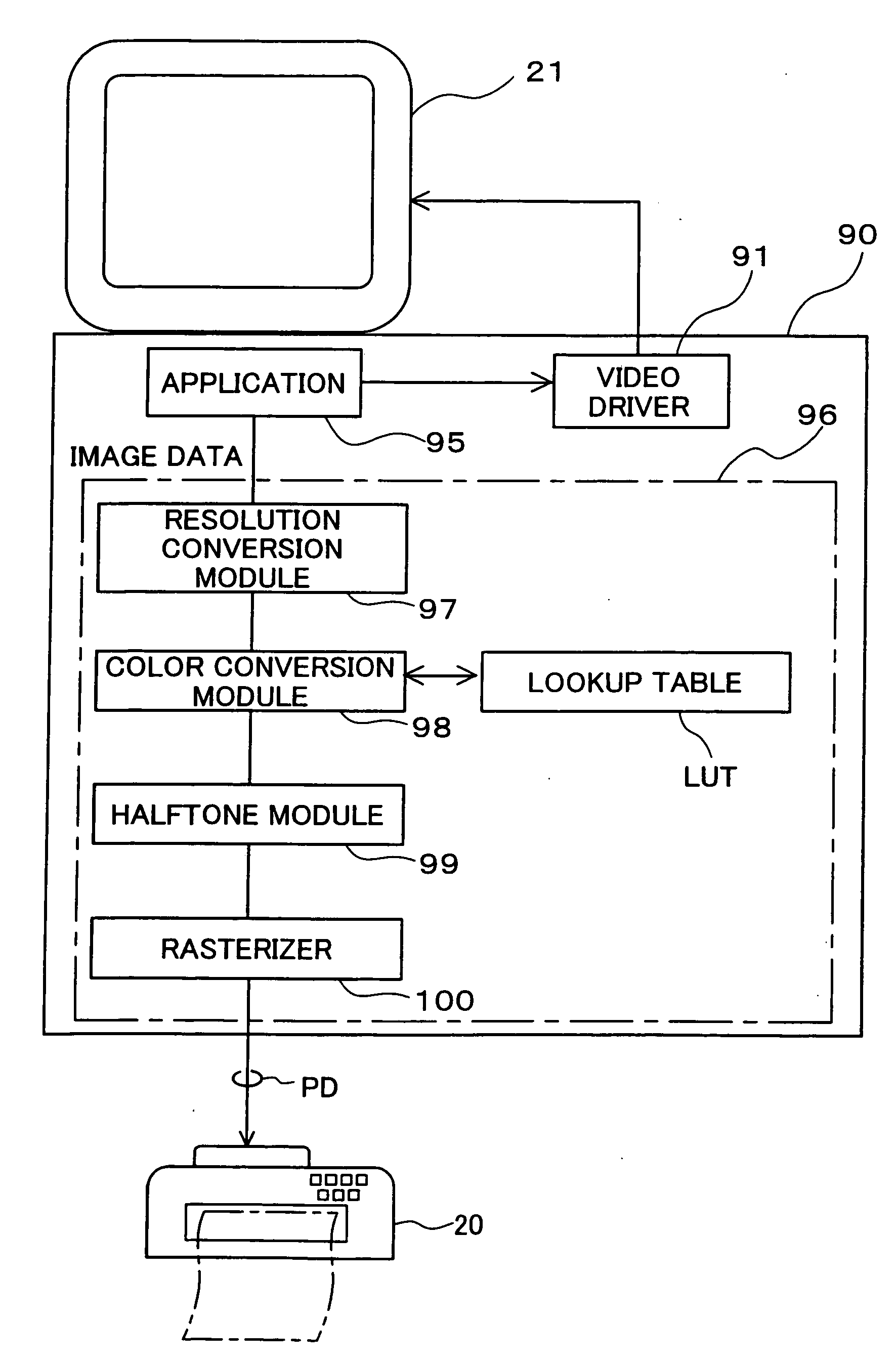Color separation into a plurality of ink components including primary color ink and spot color ink
a color separation and ink technology, applied in the field of color printing technique, can solve the problem that no feature has been devised for color separation
- Summary
- Abstract
- Description
- Claims
- Application Information
AI Technical Summary
Benefits of technology
Problems solved by technology
Method used
Image
Examples
embodiment 1
C. Embodiment 1
C1: Example 1 of Color Separation Process in Embodiment 1
[0091]FIG. 8 is a flowchart depicting the color separation process processing routine in Example 1. In this color separation process, a process to convert from a primary color system to a reproduction color system is executed. In Step S500 in FIG. 8, an ink set composed of the chromatic primary color inks C, M, Y and the spot color inks R, V as useable inks is established.
[0092]In Step S510, a provisional color separation ink quantity set I(Cp, Mp, Yp, Rp, Vp) for reproducing on a print medium a reproduction color corresponding to an input color I(Ci, Mi, Yi) is calculated. In Example 1, it is assumed that input color I(Ci, Mi, Yi) matches a reproduction color to be reproduced. As there are innumerable color separation ink quantity sets that can give an arbitrary reproduction color, the provisional color separation ink quantity set is determined by establishing a certain specific condition. For example, in this ...
example 2
C2. Example 2 of Color Separation Process in Embodiment 1
[0109]FIG. 12 is a flowchart depicting a processing routine in a second Example. In Example 1 described previously, primary color system input values per se are employed as the reproduction colors (the colors of the reproduction color system); in Example 2, however, colors of higher saturation than input colors are employed as the reproduction colors. The reason this is possible lies in the fact that the spot color inks R, V included in the reproduction color system can achieve higher levels of saturation as regards to red color and violet color than color mixtures of chromatic primary color inks.
[0110]In Step S100 in FIG. 12, an ink set composed of the chromatic primary color inks C, M, Y and the spot color inks R, V as useable inks is established.
[0111]Next, in Step S110, an ink duty limit, which limits ink quantity, is established for each color of the ink set. Ink duty limit is established with reference to type of ink and...
case 1-1
(Case 1-1) The temporary ink quantity pair color coordinate point Prv is located inside permissible range RA.
PUM
 Login to View More
Login to View More Abstract
Description
Claims
Application Information
 Login to View More
Login to View More - R&D
- Intellectual Property
- Life Sciences
- Materials
- Tech Scout
- Unparalleled Data Quality
- Higher Quality Content
- 60% Fewer Hallucinations
Browse by: Latest US Patents, China's latest patents, Technical Efficacy Thesaurus, Application Domain, Technology Topic, Popular Technical Reports.
© 2025 PatSnap. All rights reserved.Legal|Privacy policy|Modern Slavery Act Transparency Statement|Sitemap|About US| Contact US: help@patsnap.com



